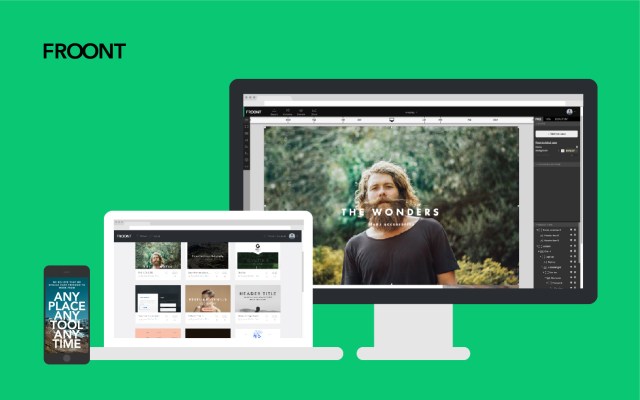When Froont, backed by Finnish VC Inventure, launched in public beta in May 2013, it offered an easy way for designers to create, prototype and share responsive website designs with team members and clients, without the need to write code. The idea was to do away with endless Photoshop mockups and actually design — under the hood, at least — in HTML/CSS. Today the startup’s visual editor exits Beta, and with it the company is launching a platform to make sharing web design with the wider community as easy as sharing code.
The flagship feature is that Froont designs can now be cloned, edited, and shared with a client or used as a starting point for new designs. In some ways it’s similar to how something like Github works for raw code, and the wider open source movement as a whole, but for visual web designers, thanks to Froont’s pre-existing browser-based visual editor.
“Designers are crazy about sharing, as it makes them better and eventually shapes new trends,” says Froont co-founder and CEO Sandijs Ruluks, citing design communities like Behance and Dribbble. “The same applies for Github, where people are embracing the community and reuse code made by others. The interesting part is that open-sourced coding is now perceived as something totally normal and its benefits can’t be denied. Open-sourced design on the other hand, isn’t there yet, although we see the excitement around it”.
In the same way web designers and developers freely share icons, WordPress themes, UI kits, and Bootstrap or Zurb frameworks, Ruluks believes it should be possible to share and build upon entire responsive page designs. But, until now, he argues, there hasn’t been an easy way to do this.
“The reason why the rest of web design hasn’t picked up all this attitude is simple though – we lack an open design standard,” he says. “Code is open, but Photoshop and code don’t go together. We can hope that all designers will become fluent with code, but that isn’t happening… That’s where Froont comes into play.”
Here Ruluks is referring to the fact that, while Froont’s visual editor is largely drag ‘n’ drop, it outputs HTML5 and CSS3, so it’s already based on web standards. “We see a big opportunity to make design open, which means people can show off, get inspired, but they also can reuse the design and create something new on top of it. That opens possibilities where designers can design faster by reusing each other’s work, they can show fully working prototypes and deliver a microsite to the client that works out of the box,” he adds.
The new freemium revenue model is also interesting. Pages/microsites created by non-paying users are always public and can be cloned, edited and reused by others. If you want to keep your work private you pay a subscription. Or, as Ruluks puts it, “for free you pay with sharing, for privacy you pay with money”.
